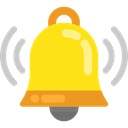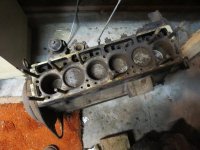There is more going on with a main bearing cap than most seem to understand. In a perfect world, the caps are all installed on the block at the factory, and the mains are bored together perfectly on center vertically and horizontally. In the real world, if the bore is off by a fraction of a degree, or just one or two thousandths...which would be a GOOD block!!, then these are the issues with just putting in a different cap:
1). The “crush” is what holds the bearing insert in place AND keeps it from spinning. If the bore is just .002” up or down at the rear cap, you could lose the insert crush, causing a spun insert or a reduced bearing clearance as the insert is over-crushed. Worst case you could crack the new cap with the over-crush stress. The little tabs on an insert will not prevent an insert from spinning. Those are for alignment only...crush is what keeps the insert in place.
2). If the bore was just .001” left or right of center, then the inserts will have a lip where they meet. This will not show with plastigage. On one side the insert lip will act to scrape the oil from the crank AND reduce the true bearing clearance. Double whammy.
3). There is a good chance the bore is slightly off in both vertical and horizontal directions...resulting in multiple problems described above. Remember the replacement cap was also bored in an imperfect world...doubling your chance of mis-match problems.
4). If the locating tabs are off by a thousandth between the original cap and the replacement cap, then the replacement cap could have a “twist” in relation to the crank centerline. This misalign would also not be evident with plastigage or mics, but could eliminate all clearance on the insert edges.
My descriptions are for only 1-2 thousands bore error. Once again, that would be a good factory bore job. I have seen them off by .005”, which would be twice the entire recommended bearing clearance. It’s your engine and your decision. But it’s one of those items that if it goes wrong...it will cause a lot of damage. Is it really worth it?

 Hi Guest!
Hi Guest!

 smilie in place of the real @
smilie in place of the real @
 Pretty Please - add it to our Events forum(s) and add to the calendar! >>
Pretty Please - add it to our Events forum(s) and add to the calendar! >> 
